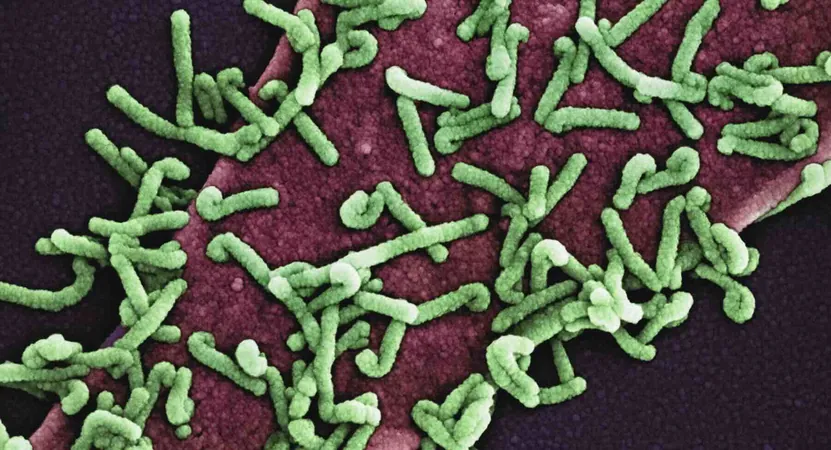
Microneedle Vaccines: The Future of Pain-Free Immunization
2025-08-27
Author: John Tan
Revolutionizing Vaccination with Microneedles
Microneedle (MN) vaccine systems are fast emerging as a groundbreaking solution to enhance vaccine administration, as highlighted in a recent study in *Vaccine*. Despite some challenges in implementation, these innovative systems have shown a remarkable ability to improve immune responses and maintain vaccine stability.
The researchers emphasized that traditional vaccine delivery methods face numerous obstacles, making microneedle technology a promising alternative. This method involves tiny needles that administer vaccines directly to the skin, potentially enhancing safety and accessibility.
Post-Pandemic Vaccine Challenges
Following the unprecedented events of the COVID-19 pandemic, vaccine development had been at a standstill in 2019, but the urgency of the crisis pushed health professionals to explore novel immunization strategies. Unfortunately, vaccine hesitancy grew during this period, raising concerns about the future of public health.
Factors such as pain and fear of injections have propelled the demand for microneedle vaccines. These devices promise a less painful vaccination experience while effectively delivering vaccines packed with immune-boosting agents right into the skin.
Exploring Microneedle Technologies
The study not only discusses the benefits of MN vaccines but also offers a comprehensive view on their design and development. Researchers identified five primary types of microneedle vaccine delivery systems: coated, dissolving, hollow, solid, and hydrogel-forming MNs. Each option presents unique advantages that could transform vaccination protocols as the technology evolves.
Safety, Comfort, and Accessibility
A key focus of the MN technology is to enhance patient comfort. The microneedles create tiny openings in the skin, allowing for painless drug delivery without disturbing nerve endings, thereby reducing pain and irritation.
Implementing MN vaccines could lead to self-administration capabilities, enhanced access to immunization, and a reduction in needle-related injuries, making vaccines more appealing to hesitant individuals.
Overcoming Implementation Hurdles
While the potential benefits of microneedle vaccines are vast, numerous challenges remain. Issues such as ensuring precise dosage, maintaining structural integrity, and navigating production costs pose significant hurdles that researchers are currently addressing.
Despite these obstacles, the integration of microneedle technology with vaccines presents an exciting avenue for public health advancements. As researchers continue to refine these systems, they aim to create a more effective and accessible vaccination strategy.
The Road Ahead for Microneedle Vaccination
The promise of microneedles in vaccine delivery could reshape global immunization efforts, particularly in tackling vaccine hesitancy. Researchers remain committed to overcoming existing challenges, ensuring that this innovative technology can play a vital role in enhancing public health.
With ongoing studies and advancements in microneedle technology, the future of vaccination looks not only more comfortable but also more effective, paving the way for broader acceptance and increased vaccination rates globally.



 Brasil (PT)
Brasil (PT)
 Canada (EN)
Canada (EN)
 Chile (ES)
Chile (ES)
 Česko (CS)
Česko (CS)
 대한민국 (KO)
대한민국 (KO)
 España (ES)
España (ES)
 France (FR)
France (FR)
 Hong Kong (EN)
Hong Kong (EN)
 Italia (IT)
Italia (IT)
 日本 (JA)
日本 (JA)
 Magyarország (HU)
Magyarország (HU)
 Norge (NO)
Norge (NO)
 Polska (PL)
Polska (PL)
 Schweiz (DE)
Schweiz (DE)
 Singapore (EN)
Singapore (EN)
 Sverige (SV)
Sverige (SV)
 Suomi (FI)
Suomi (FI)
 Türkiye (TR)
Türkiye (TR)
 الإمارات العربية المتحدة (AR)
الإمارات العربية المتحدة (AR)